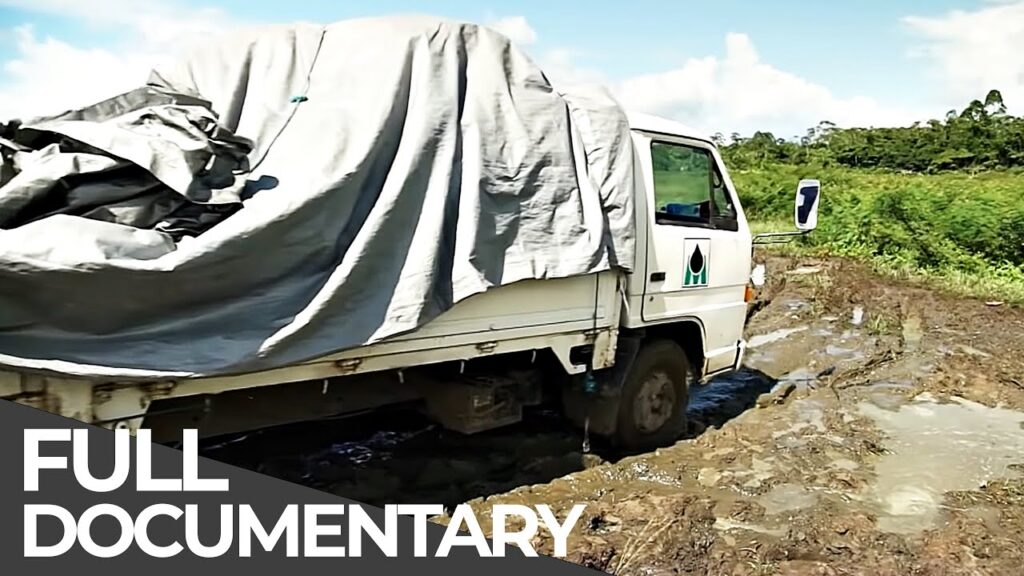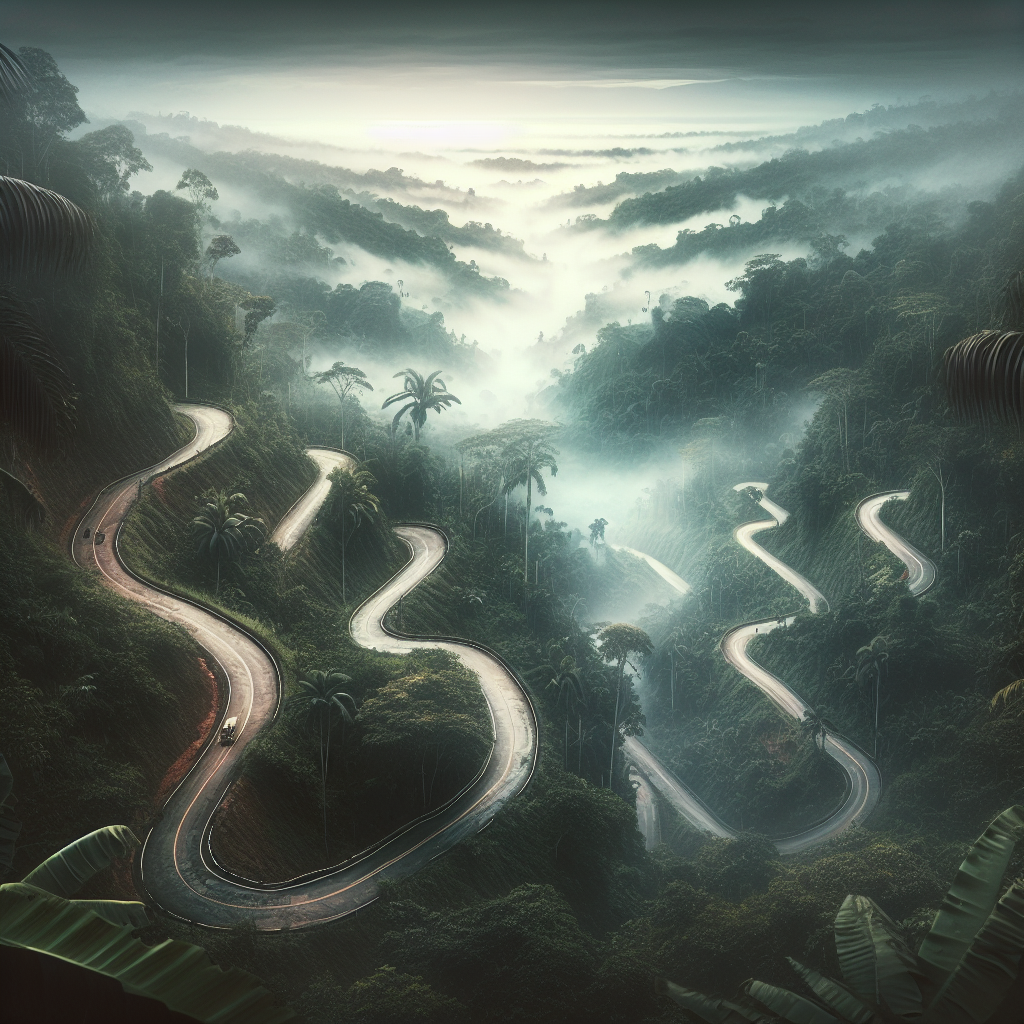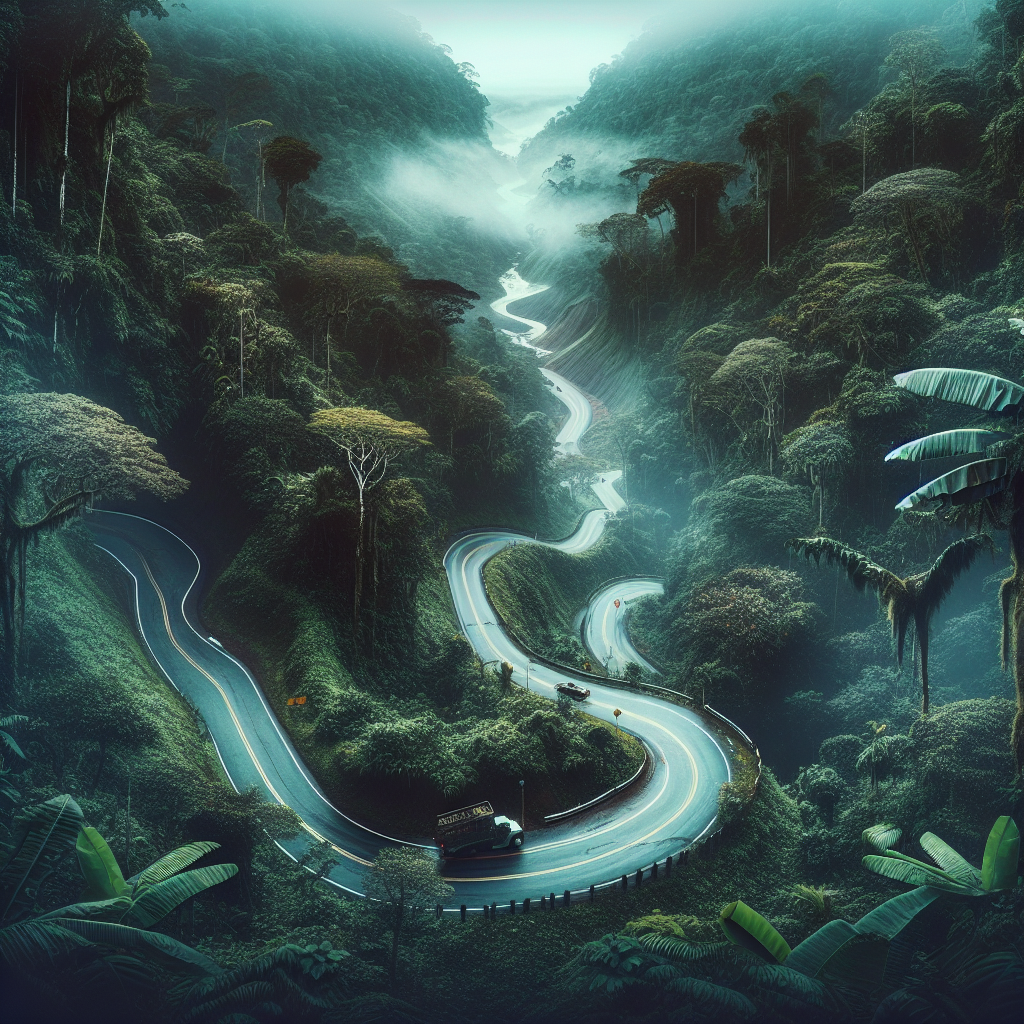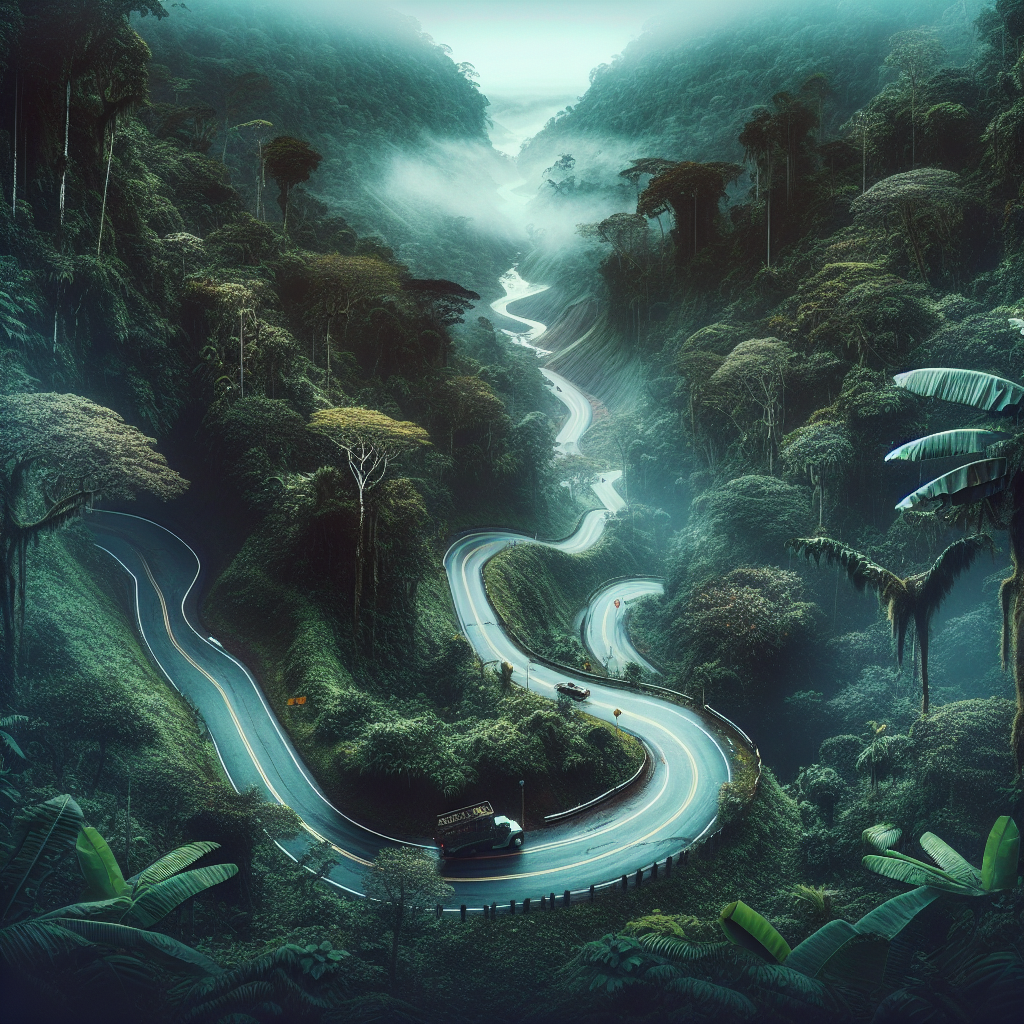In the heart of the Amazon jungle lies Suriname, a country that is often difficult to locate on a map. With its dense, green forest and minimal road infrastructure, Suriname is a land of adventure and challenge. For gold miners like Pedro and his wife Francesca, their daily commute to the mines involves navigating unpredictable waters and overcoming various obstacles. This gripping documentary by Free Documentary takes you on a thrilling journey through the dangerous roads and waterways of Suriname, showcasing the resilience and determination of those who call this unique country home.
Best Deals to Surinam by BOOKING.COM
Introduction
Suriname, a country located in the heart of the Amazon jungle, is often difficult to find on a map due to its size and remote location. Covering only a sixth of the size of France, Suriname is densely covered in lush, green forests and has limited road infrastructure. This unique geography presents transportation challenges that require alternative methods, such as traveling on tracks and large rivers. One couple, Pedro and Francesca, embarks on a dangerous journey navigating these unpredictable waters to reach their gold mine. In this article, we will explore their journey and shed light on the challenges faced by Suriname’s gold mining industry as well as the struggles and hopes of the local villagers. Additionally, we will delve into the process of gold mining itself and its impact on the environment, as well as the life of a gold miner. Through these narratives, we hope to provide a comprehensive overview of the realities and experiences surrounding Suriname’s gold mining industry.
Overview of Suriname
Location and Size
Suriname, nestled in the heart of the Amazon jungle, is often a challenging country to locate on a map due to its remote location. With an area of 163,000 square kilometers, Suriname is approximately a sixth of the size of France. Its vast, dense forests contribute to the country’s overall landscape and present both challenges and opportunities for its inhabitants.
Transportation Challenges
Suriname’s limited road infrastructure means that alternative methods of transportation are necessary to navigate the country. Rather than relying on traditional roads, the people of Suriname use tracks and large rivers as their main means of transportation. Canoes serve as the equivalent of cars and trucks on these extensive river networks, effectively functioning as floating motorways. While this unique transportation system allows for travel between villages, it also poses risks and difficulties, particularly when navigating through unpredictable waters.

FIND YOUR BEST HOTEL IN SURINAM WITH BOOKING.COM
Pedro and Francesca’s Journey
Preparing for the Trip
Pedro and Francesca, gold miners in Suriname, embark on a journey to their mine in the Amazon forest every year. Before setting off, they carefully prepare for the months-long trip by ensuring they have all the necessary supplies. From fuel to food and equipment, they meticulously pack everything they need to sustain themselves during their time in the mine.
Navigating the Jungle and Rivers
The journey to Pedro and Francesca’s mine entails traveling through dense jungle and navigating large rivers. This expedition involves overcoming various challenges such as sandbars, rocks, and rapids. The couple relies on their experience and knowledge of the waterways to safely navigate these treacherous conditions and ensure they reach their destination.
Challenges Faced
Pedro and Francesca encounter numerous challenges throughout their journey. From breakdowns of their equipment to potential dangers in the water, they must navigate unforeseen obstacles along the way. The couple’s determination and resilience are put to the test as they face these challenges head-on and strive to reach their destination despite the difficulties.
Suriname’s Gold Mining Industry
Historical Background
Suriname was historically a Dutch colony built on the African slave trade. Many of the descendants of the enslaved Africans still reside in Suriname and work in various industries, including gold mining. The country’s gold mining industry has a complex history intertwined with colonialism, slavery, and the exploitation of natural resources.
Impact on Local Communities
Gold mining has a significant impact on the local communities in Suriname. While some individuals find employment within the industry, others are affected by the environmental and social consequences of mining. The influx of gold miners and the construction associated with mining activities can disrupt traditional ways of life, leading to both positive and negative impacts on the local communities.

Villagers’ Struggles and Hopes
Stocking up on Supplies
In other parts of Suriname, villagers face their own struggles as they travel by boat and foot to reach the city and stock up on essential supplies. This journey requires endurance and resourcefulness, as they must transport heavy loads during long and arduous trips. The availability of supplies is critical to their survival and well-being.
The Anticipation of Road Construction
The construction of a road in the area brings both hope and concern to the villagers. On one hand, improved road infrastructure would ease their transportation challenges and provide better access to essential resources. On the other hand, there are fears that road construction could lead to deforestation and attract more gold diggers, potentially disrupting the delicate balance of the environment and traditional ways of life.
Education and Limited Resources
Education is a significant concern for the villagers, particularly due to limited resources and access to schooling. In remote villages like Langu, schools operate with limited petrol supply to fuel generators, which only run in the evening. The villagers must travel long distances to collect petrol, often carrying heavy loads to ensure the school has enough supplies to function. The road construction project brings hopes for improved access to education, but there is also a sense of uncertainty and apprehension.
Pedro and Francesca’s Arrival at the Mine
Challenges during the Journey
Pedro and Francesca’s journey to their gold mine is not without its difficulties. From breakdowns and unpredictable waters to the constant threat of capsizing, they encounter numerous challenges along the way. Despite these obstacles, their determination and skill enable them to navigate through adversity and forge ahead towards their destination.
Unpacking and Unloading
Upon arriving at the mine, Pedro and Francesca face the task of unpacking and unloading all the essential supplies they have brought with them. This involves a meticulous process of organizing and setting up their camp, ensuring that everything is ready for the work ahead. The couple’s efficiency and teamwork are vital to the smooth operation of their mine.
The Camp Becomes Active
As Pedro and Francesca settle into their camp, the entire area begins to come alive with the activity of other gold miners. The constant buzz of machines and the hustle and bustle of people create a unique atmosphere in the otherwise remote and isolated location. The camaraderie among the gold miners and their shared pursuit of wealth make the camp an energetic and dynamic place.

The Process of Gold Mining
Excavating the Earth
One of the primary tasks in gold mining involves excavating the earth to reach the gold-bearing layers. This process requires heavy machinery, such as diggers, to break through the surface and extract the earth for further processing. The digger continuously operates to feed material into the gold extraction process.
Transportation Challenges
Transporting equipment and materials in the mining area poses its own set of challenges. The remote location of the mine, coupled with the lack of traditional roads, means that alternative methods of transportation must be employed. Canoes and other watercraft are used to transport heavy machinery and supplies, navigating the rivers with precision and skill.
Uncertainty and Hard Work
Gold mining is an unpredictable endeavor that carries both uncertainty and hard work. There is no guarantee of finding gold, and the process requires constant effort and perseverance. The gold miner must work diligently to extract as much gold as possible, always striving for a better future and a comfortable retirement.
Life as a Gold Miner
Independence and Retirement
One of the appealing aspects of being a gold miner is the independence it offers. Gold miners work for themselves and are not beholden to a boss or supervisor. This independence allows them to set their own schedules and work towards their personal goals, such as securing a comfortable retirement.
The Impact of Deforestation
Gold mining, like in other Amazon countries, contributes to deforestation in Suriname. The clearing of land for mining activities has a significant environmental impact, disrupting ecosystems and contributing to the loss of biodiversity. The consequences of deforestation are a growing concern for both the gold mining industry and the surrounding communities.
Health and Safety Concerns
The life of a gold miner is not without its health and safety risks. The demanding physical labor, exposure to various elements, and potential accidents pose significant risks to the health and well-being of miners. Proper safety measures and protocols are essential to mitigate these risks and ensure the miners’ safety.
Conclusion
The journey of Pedro and Francesca to their gold mine in Suriname sheds light on the challenges and realities of the gold mining industry in the heart of the Amazon jungle. From the difficulties of navigating unpredictable waters to the environmental impact of mining activities, there are various factors at play within this industry. The hopes and struggles of the local villagers further emphasize the intertwined nature of Suriname’s gold mining industry with the surrounding communities. While gold mining brings opportunities for wealth and independence, it is not without its risks and consequences. It is crucial to strive for a balance that allows for sustainable development and the preservation of the unique ecosystems in Suriname.
